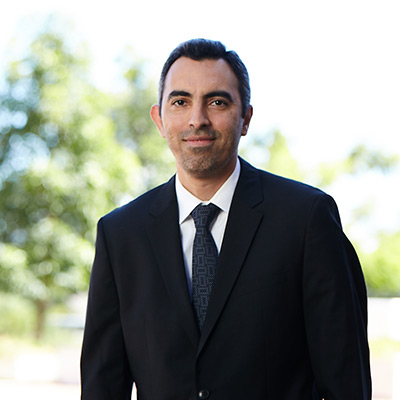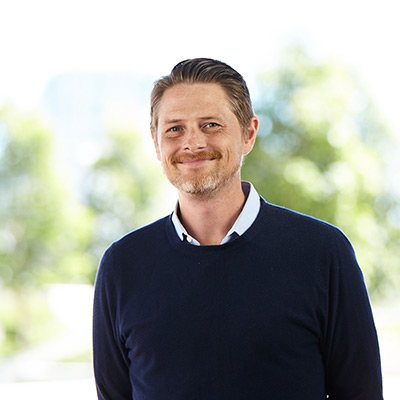
Andrew F. Leuchter, MD, is a Professor of Psychiatry at the Semel Institute for Neuroscience and Human Behavior at UCLA. He also is Director of the Neuromodulation Division and a Senior Research Scientist at the Semel Institute. Dr. Leuchter is a graduate of Stanford University and the Baylor College of Medicine who joined the UCLA faculty in 1986.

Nanthia Suthana, PhD, is an Assistant Professor of Psychiatry and Biobehavioral Science and Neurosurgery at the David Geffen School of Medicine at UCLA and Director of the Laboratory of Neuromodulation and Neuroimaging. Dr. Suthana has a unique multi-modality background with expertise in Cognitive Neuroscience methodologies including functional magnetic resonance imaging, single neuron and local field potential electrophysiology, electroencephalography, and deep brain stimulation. She completed her graduate training in the UCLA Neuroscience interdepartmental PhD program and postdoctoral training in the Department of Neurosurgery prior to joining faculty.
Nanthia Suthana, PhD, is an Assistant Professor of Psychiatry and Biobehavioral Science and Neurosurgery at the David Geffen School of Medicine at UCLA and Director of the Laboratory of Neuromodulation and Neuroimaging. Dr. Suthana has a unique multi-modality background with expertise in Cognitive Neuroscience methodologies including functional magnetic resonance imaging, single neuron and local field potential electrophysiology, electroencephalography, and deep brain stimulation. She completed her graduate training in the UCLA Neuroscience interdepartmental PhD program and postdoctoral training in the Department of Neurosurgery prior to joining faculty.
Dr. Suthana’s research focuses on development of invasive and non-invasive methodologies that can restore cognitive functions such as learning and memory. The program aims to develop therapeutic cognitive treatments and tools through the characterization of neuronal mechanisms underlying successful human learning and memory. Invasive methods such as deep brain stimulation combined with intracranial recordings of single-unit and local field potentials in epilepsy patients is utilized to characterize and develop neuromodulatory methods of memory restoration in individuals with debilitating memory impairments. The lab investigates neural changes underlying successful learning and memory and develops non-invasive methods for improving cognitive function using transcranial magnetic stimulation guided by high-resolution functional magnetic resonance imaging. The lab includes members with diverse backgrounds in neuroscience, bioengineering, psychology, computer science, and physics and has ongoing collaborations with the department of engineering to develop a novel wireless neuroprosthetic device for treatment of psychiatric and neurological disorders.
Dr. Suthana’s research published in the New England Journal of Medicine on deep brain stimulation and memory enhancement has been covered in various media outlets including the Wallstreet Journal, New York Times, Science magazine, Bloomberg News, Reuters, Los Angeles Times, Time magazine, CNN, US News and others. She has received a Society for Neuroscience Travel award and a nomination for the UCLA Chancellor’s Award for Postdoctoral Research.

Dr. Bisley’s lab studies the neuronal mechanisms underlying cognitive and behavioral functions using a combination of single neuron electrophysiology, psychophysics and microstimulation. Recent work has focused on attention, spatial encoding of the visual world, decision making and memory processes (both short and long term). The goal of many of these studies is to create hypotheses about the neuronal functioning within the brain and to then test these hypotheses using neural stimulation. These foundations can then be used to identify potential clinical benefits of stimulation.

Dr. Yvette Bordelon received her MD and PhD degrees from the University of Pennsylvania School of Medicine in Philadelphia. Her thesis work was performed with Dr. Marie-Francoise Chesselet and involved investigating mechanisms of cell death in an animal model of Huntington disease. She completed residency training in Neurology at Massachusetts General and Brigham and Women’s Hospitals and then a Movement Disorders Fellowship at Columbia University. Dr. Bordelon is Assistant Professor in Residence in the Neurology department at UCLA. Her clinical work involves the diagnosis and treatment of Parkinson’s disease, Huntington disease and other movement disorders. Her clinical research interests include the development of biomarkers for neurodegenerative diseases, epidemiologic studies of Parkinson disease and conduct of clinical trials in movement disorders.
O’Duffy, A. E. Bordelon, Y. M. McLaughlin, B. Killer proteases and little strokes–how the things that do not kill you make you stronger J Cereb Blood Flow Metab, 2007; 27(4): 655-68. Bartzokis, G Lu, PH Tishler, TA Fong, SM Oluwadara, B Finn, JP Huang, D Bordelon, Y Mintz, J Perlman, S Myelin Breakdown and Iron Changes in Huntington’s Disease: Pathogenesis and Treatment Implications Neurochem Res, 2007; . Frucht, SJ Houghton, WC Bordelon, Y Greene, PE Louis, ED A single-blind, open-label trial of sodium oxybate for myoclonus and essential tremor Neurology, 2005; 65(12): 1967-9. Frucht, SJ Bordelon, Y Houghton, WH Reardan, D A pilot tolerability and efficacy trial of sodium oxybate in ethanol-responsive movement disorders Movement disorders : official journal of the Movement Disorder Society, 2005; 20(10): 1330-7. Frucht, SJ Bordelon, Y Houghton, WH Marked amelioration of alcohol-responsive posthypoxic myoclonus by gamma-hydroxybutyric acid (Xyrem) Movement disorders : official journal of the Movement Disorder Society, 2005; 20(6): 745-51. Bordelon, YM Mackenzie, L Chesselet, MF Morphology and compartmental location of cells exhibiting DNA damage after quinolinic acid injections into rat striatum The Journal of comparative neurology, 1999; 412(1): 38-50. Bordelon, YM Chesselet, MF Early effects of intrastriatal injections of quinolinic acid on microtubule-associated protein-2 and neuropeptides in rat basal ganglia Neuroscience, 1999; 93(3): 843-53. Bordelon, YM Chesselet, MF Ereci????ska, M Silver, IA Effects of intrastriatal injection of quinolinic acid on electrical activity and extracellular ion concentrations in rat striatum in vivo Neuroscience, 1998; 83(2): 459-69. Bordelon, YM Chesselet, MF Nelson, D Welsh, F Erecinska, M Energetic dysfunction in quinolinic acid-lesioned rat striatum Journal of neurochemistry, 1997; 69(4): 1629-39. Gurevich, EV Bordelon, Y Shapiro, RM Arnold, SE Gur, RE Joyce, JN Mesolimbic dopamine D3 receptors and use of antipsychotics in patients with schizophrenia. A postmortem study Archives of general psychiatry, 1997; 54(3): 225-32.


Randall Espinoza, MD, MPH is currently Clinical Professor in the Division of Geriatric Psychiatry, Department of Psychiatry and Biobehavioral Sciences at the Geffen School of Medicine at UCLA. From 2007 to 2009 he served as Chief of Staff of the Stuart and Lynda Resnick Neuropsychiatric Hospital at UCLA. In 2009 he was selected as Director of the UCLA Geriatric Psychiatry Fellowship Training Program. Since 2000 he has been Medical Director of the Electroconvulsive Therapy Program at the UCLA Neuropsychiatric Institute and Hospital, and he also serves on the Medical IRB of the UCLA School of Medicine.
Randall Espinoza, MD, MPH is currently Clinical Professor in the Division of Geriatric Psychiatry, Department of Psychiatry and Biobehavioral Sciences at the Geffen School of Medicine at UCLA. From 2007 to 2009 he served as Chief of Staff of the Stuart and Lynda Resnick Neuropsychiatric Hospital at UCLA. In 2009 he was selected as Director of the UCLA Geriatric Psychiatry Fellowship Training Program. Since 2000 he has been Medical Director of the Electroconvulsive Therapy Program at the UCLA Neuropsychiatric Institute and Hospital, and he also serves on the Medical IRB of the UCLA School of Medicine. He received his BS degree in bioengineering from Columbia University in New York, MD from the University of Texas Southwestern Medical School in Dallas, and Executive MPH from the University of California, Los Angeles School of Public Health. He completed psychiatry residency training at UT Southwestern / Parkland Memorial Hospital in Dallas, at UNC Hospitals in Chapel Hill, NC, and at the Sepulveda VAMC and Olive View-UCLA Hospitals. He completed a geriatric psychiatry fellowship at the UCLA Neuropsychiatric Institute and Hospital and holds certification in ECT and TMS from the Association for Convulsive Therapy. He is a Master Educator with certification from the Association for Academic Psychiatry and completed the UCLA Medical Faculty Fellowship program. In 2002 he received the Outstanding Housestaff Teaching Award from the UCLA Department of Psychiatry, and in 2003 he received a Geriatric Academic Career Development Award (K01) from the Human Resources and Services Administration of the U.S. Department of Health and Human Services, one of only 5 geriatric psychiatrists nationwide. He is actively involved in American Association for Geriatric Psychiatry, Association for Academic Psychiatry and American Psychiatric Association. He is a Co-Director for the Annual UCLA Geriatric Medicine Intensive Course and Board Review. He is on the Editorial Board of Academic Psychiatry and a reviewer for several journals in geriatric psychiatry and geriatric medicine and regularly contributes to UCLA Healthy Years, a quarterly newsletter of the Division of Geriatric Medicine at UCLA. He has published several articles, reviews, and monographs in the field of geriatric psychiatry.
Hauptman Jason S, DeSalles Antonio A F, Espinoza Randall, Sedrak Mark, Ishida Warren Potential surgical targets for deep brain stimulation in treatment-resistant depression Neurosurgical focus, 2008; 25(1): E3.
Weaver Jonathan D, Espinoza Randall, Weintraub Nancy T The utility of PET brain imaging in the initial evaluation of dementia Journal of the American Medical Directors Association, 2007; 8(3): 150-7.
Espinoza Randall T Improving the recognition and management of dementia in long-term care: obstacles and opportunities Journal of the American Medical Directors Association, 2006; 7(2): 128-30.
Gnanadesigan Nallini, Espinoza Randall T, Smith Rick, Israel Michelle, Reuben David B Interaction of serotonergic antidepressants and opioid analgesics: Is serotonin syndrome going undetected? Journal of the American Medical Directors Association, 2005; 6(4): 265-9.
Asghar Ali Ali A, Espinoza Randall, Kavirajan Harish, Read Stephen The effect of risperidone on nursing burden associated with caring for patients with dementia Journal of the American Geriatrics Society, 2005; 53(7): 1261-2; author reply 1262-3.
Espinoza Randall Assessing antipsychotic effectiveness in dementia: a factor analysis approach Journal of the American Medical Directors Association, 2005; 4(2): 113-4.
Espinoza Randall T Electroconvulsive therapy in the long-term care setting: an overview of controversies in practice Journal of the American Medical Directors Association, 2005; 4(1): 40-4.
Espinoza Randall T Electroconvulsive therapy in the long-term care setting: an overview of controversies in practice Journal of the American Medical Directors Association, 2005; 5(2 Suppl): S53-8.
Gnanadesigan Nallini, Espinoza Randall T, Smith Rick L The serotonin syndrome The New England journal of medicine, 2005; 352(23): 2454-6; author reply 2454-6.
Khang Peter, Weintraub Nancy, Espinoza Randall T The use, benefits, and costs of cholinesterase inhibitors for Alzheimer’s dementia in long-term care: are the data relevant and available? Journal of the American Medical Directors Association, 2005; 5(4): 249-55.

Dr. Fleisher (he/him) is an Assistant Clinical Professor of Psychiatry. His focus is on the treatment of mood dysregulation, including both mood disorders and personality disorders.
Outside of UCLA, Dr. Fleisher serves as the Head of Clinical at reflect and as Medical Director of the Boston Child Study Center, Los Angeles.

The Cognitive Neurophysiology Laboratory performs both clinical and research work, respectively, dedicated to the treatment of intractable seizure disorders and epilepsy and to the study of human memory from single neuron level to clinical intervention. Techniques include the use of depth electrodes, which are implanted in the brains of patients for clinical diagnostic purposes, as a means to investigate deep brain stimulation’s methods for memory enhancement and the behavior of individual neurons during cognition. The laboratory is the seat of the Restoration of Active Memory (RAM) Program funded by DARPA as part of the President/s Brain Initiative.
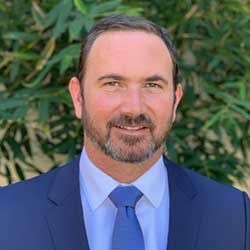
Dr. Heiser’s primary research interest is clinical systems neuroscience that aims to identify treatment intervention targets. He is currently working with Dr. Marco Iacoboni and Dr. Carrie Bearden using transcranial magnetic stimulation (TMS) and fMRI to examine the mirror neuron system and its relation to social cognition in patients at high risk for psychosis (supported by the AACAP Pilot Research Award). To further explore his interest in the neurobiology of social cognition in psychiatric illness, he is developing a project with Dr. James McCracken to use TMS as an intervention to enhance imitation and social cognition in patients with Autism Spectrum Disorder (ASD).
Dr. Heiser’s primary research interest is clinical systems neuroscience that aims to identify treatment intervention targets. He is currently working with Dr. Marco Iacoboni and Dr. Carrie Bearden using transcranial magnetic stimulation (TMS) and fMRI to examine the mirror neuron system and its relation to social cognition in patients at high risk for psychosis (supported by the AACAP Pilot Research Award). To further explore his interest in the neurobiology of social cognition in psychiatric illness, he is developing a project with Dr. James McCracken to use TMS as an intervention to enhance imitation and social cognition in patients with Autism Spectrum Disorder (ASD). Combining neuroimaging with TMS will allow us to understand the neural pathways that are disrupted in neurodevelopmental disorders such as ASD and to alter those pathways in order to remediate core deficits. Ultimately, his plan is to develop an integrated clinical research pediatric neuromodulation program to treat a wide range of psychiatric disorders in children and adolescents.
Marc Heiser is currently a fellow physician in the division of Child and Adolescent Psychiatry at the Semel Institute for Neuroscience and Behavior. He obtained a PhD in Neuroscience from UCSF, studying single neuron electrophysiology and cortical plasticity with Dr. Christoph Schreiner and Dr. Michael Merzenich. Dr. Heiser then completed his MD at UCSF and residency in psychiatry at UCLA.
Dr. Heiser’s current research combines transcranial magnetic stimulation (TMS) with functional neuroimaging to study the neurophysiology of psychiatric symptoms in youth and to develop treatments using neuromodulation. Currently, he is collaborating with Dr. Marco Iacoboni and Dr. Carrie Bearden using these methods to examine the mirror neuron system and its relation to social competence in patients at high risk for psychosis. Dr. Heiser is also working with Dr. James McCracken to develop a TMS intervention to enhance social behavior in patients with Autism Spectrum Disorder. Dr. Heiser believes that combining neuroimaging with TMS will allow us to understand the neural pathways that are disrupted in neurodevelopmental disorders such as schizophrenia and autism and to alter those pathways in order to remediate core deficits. Ultimately, his plan is to develop an integrated clinical research pediatric neuromodulation program to treat a wide range of psychiatric disorders in children and adolescents.
Dr. Heiser’s work has been published in scientific journals including Proceedings of The National Academy of Sciences, Neuron, and the Journal of Neuroscience. He has received the American Academy of Child and Adolescent Psychiatry Pilot Award for Young Investigators and the UCLA Gertrude Ruth Greenblatt Award for Humane Commitment to Children Requiring Psychiatric Care.
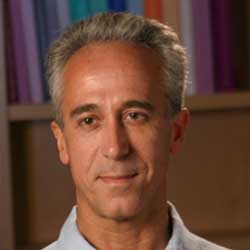
Marco Iacoboni, MD PhD, is Professor of Psychiatry and Biobehavioral Sciences at the David Geffen School of Medicine at UCLA, as well as the Director of the Neuromodulation Lab of the Ahmanson-Lovelace Brain Mapping Center. He is trained in neurology and neuroscience, and joined the UCLA faculty in 1999. Marco Iacoboni, MD PhD, is Professor of Psychiatry and Biobehavioral Sciences at the David Geffen School of Medicine at UCLA, as well as the Director of the Neuromodulation Lab of the Ahmanson-Lovelace Brain Mapping Center. He is trained in neurology and neuroscience, and joined the UCLA faculty in 1999.
Dr. Iacoboni pioneered the research on mirror neurons, the “smart cells” in our brain that allow us to understand others. His research has been covered by the New York Times, Los Angeles Times, Wall Street Journal, Newsweek, Time, The Economist, and major TV networks. Marco Iacoboni’s book on mirror neurons is entitled “Mirroring People: The Science of Empathy and How We Connect with Others.”
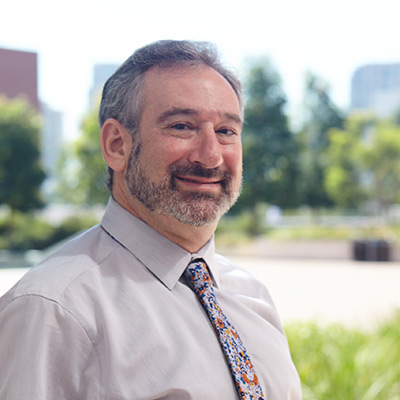
Dr. Krantz’s laboratory studies molecular mechanisms that regulate synaptic transmission, and the relationship between changes in neurotransmitter release and both the pathophysiology of depression and the neurological deficits of Parkinson’s disease (PD). Dr. Krantz’s laboratory studies molecular mechanisms that regulate synaptic transmission, and the relationship between changes in neurotransmitter release and both the pathophysiology of depression and the neurological deficits of Parkinson’s disease (PD).
As a psychiatrist, David Krantz’s primary clinical interest is depression, and he has been an attending physician in the Mood Disorders Clinic at UCLA for the past thirteen years. He also holds the Miller Family Endowed Chair in Depression Research at the UCLA Brain Research Institute. His scientific focus has been the molecular mechanisms that regulate synaptic transmission, and the relationship between changes in neurotransmitter release and both the pathophysiology of depression and the neurological deficits of Parkinson’s disease (PD). In his basic science laboratory, his group studies the function and regulation of neurotransmitter transporters, the proteins responsible for transporting neurotransmitters such as dopamine and serotonin across biological membranes. Using a variety of molecular and genetic techniques, they have determined how changes in transporter function may influence synaptic function, behavior and neurodegenerative processes relevant to both depression and PD. More recently, a fellowship from the Friends of the Semel Institute has allowed him to broaden his focus and include additional human studies as part of his research program. He is interested in understanding the underlying mechanisms by which rTMS exerts its therapeutic effects and in improving their ability to provide treatment for patients suffering from depression.
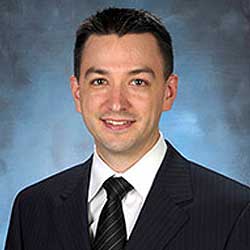
Dr. Langevin’s laboratory focuses on the application of neuromodulation technology, invasive and non-invasive, to the treatment of neurological and psychiatric disorders. Potential targets are initially studied in animal models of the disorder and promising results are translated into clinical trials. He is currently conducting a clinical trial using deep brain stimulation of the amygdala to treat severe treatment-resistant post-traumatic stress disorder. In addition, he is studying the effect of non-invasive external trigeminal nerve stimulation in the treatment of chronic mild traumatic brain injury.
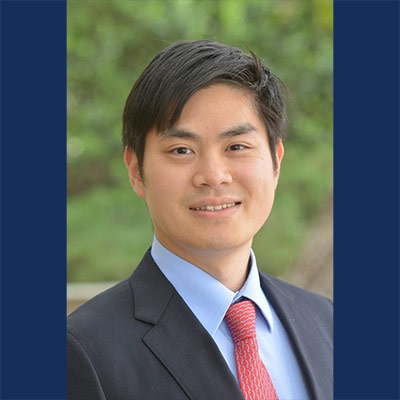
Dr. Lee is an Assistant Clinical Professor in the Department of Psychiatry and Biobehavioral Sciences at UCLA. He conducts research on how astrocytes contribute to brain wiring and experience-dependent synaptic plasticity.
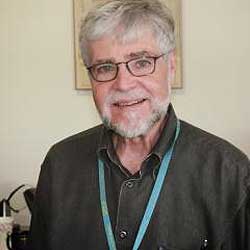
Dr. Levine’s lab directs research toward understanding the mechanisms underlying neuronal dysfunction in the basal ganglia and cortex in neurodegenerative disorders and how this affects neuromodulation. The goal is to assess neuromodulation in the striatum and cortex as in pertains to models of Huntington’s and Parkinson’s diseases. The research consists of a multidisciplinary approach combining neurophysiological, morphological and molecular techniques and involves using mutant murine models of Huntington’s and Parkinson’s diseases to understand how these neurological disorders physiologically affect cellular function.

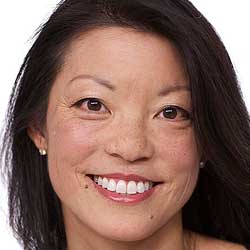
The Attention-Deficit/Hyperactivity Disorder (ADHD) program conducts neuromodulation research seeks to develop a better understanding of childhood emotional and behavioral disorders, as well as to develop new treatment approaches. Their current research project is a three-year clinical trial of Trigeminal Nerve Stimulation (TNS) for ADHD in youth ages 8-12 years that is intended to help design future studies that could lead to FDA approval as an ADHD treatment.
The Attention-Deficit/Hyperactivity Disorder (ADHD) program conducts neuromodulation research seeks to develop a better understanding of childhood emotional and behavioral disorders, as well as to develop new treatment approaches. Their current research project is a three-year clinical trial of Trigeminal Nerve Stimulation (TNS) for ADHD in youth ages 8-12 years that is intended to help design future studies that could lead to FDA approval as an ADHD treatment. The project is a four-week, double blind, randomized trial of active vs. sham (inactive) TNS followed by one week of follow-up after treatment is stopped. Participants who are randomized to the sham treatment will be eligible for four weeks of open treatment with active TNS following the blinded trial. All participants who demonstrate significant improvement on active TNS, either during the randomized trial or with open therapy, will be eligible for one year of active TNS to help manage their ADHD.
Although medications are generally safe and effective for treatment of ADHD, considerable concerns remain over side effects and many parents are ambivalent about their use. While there is great demand for non-medication approaches to ADHD, the most popular alternatives are not based on any scientific understanding of how the brain works and have no scientific evidence to support their use. Brain imaging studies on adults with medication-resistant epilepsy and depression revealed brain activation in areas involved in attention and executive functioning, regions implicated in ADHD. Based on these findings, their group conducted a preliminary investigation of TNS in children and found that treatment was safe and associated with significant improvements in behavioral and laboratory measures of ADHD.
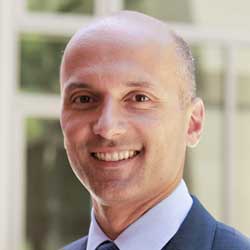
Dejan Marković is a Professor of Electrical Engineering at the University of California, Los Angeles. He is also affiliated with UCLA Bioengineering Department as a co-chair of the Neuroengineering field. He completed the PhD degree in 2006 at the University of California, Berkeley, for which he was awarded 2007 David J. Sakrison Memorial Prize. His current research is focused on implantable neuromodulation systems, domain-specific architectures, embedded systems, energy harvesting, and design methodologies. Dr. Marković co-founded Flex Logix Technologies, a semiconductor IP startup, in 2014. He received an NSF CAREER Award in 2009. In 2010, he was a co-recipient of ISSCC Jack Raper Award for Outstanding Technology Directions. Most recently, he received 2014 ISSCC Lewis Winner Award for Outstanding Paper.
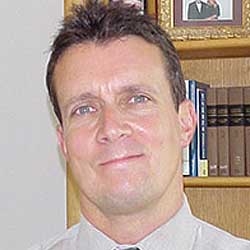
The Attention-Deficit/Hyperactivity Disorder (ADHD) program conducts neuromodulation research seeks to develop a better understanding of childhood emotional and behavioral disorders, as well as to develop new treatment approaches. Their current research project is a three-year clinical trial of Trigeminal Nerve Stimulation (TNS) for ADHD in youth ages 8-12 years that is intended to help design future studies that could lead to FDA approval as an ADHD treatment. The project is a four-week, double blind, randomized trial of active vs. sham (inactive) TNS followed by one week of follow-up after treatment is stopped.
The Attention-Deficit/Hyperactivity Disorder (ADHD) program conducts neuromodulation research seeks to develop a better understanding of childhood emotional and behavioral disorders, as well as to develop new treatment approaches. Their current research project is a three-year clinical trial of Trigeminal Nerve Stimulation (TNS) for ADHD in youth ages 8-12 years that is intended to help design future studies that could lead to FDA approval as an ADHD treatment. The project is a four-week, double blind, randomized trial of active vs. sham (inactive) TNS followed by one week of follow-up after treatment is stopped. Participants who are randomized to the sham treatment will be eligible for four weeks of open treatment with active TNS following the blinded trial. All participants who demonstrate significant improvement on active TNS, either during the randomized trial or with open therapy, will be eligible for one year of active TNS to help manage their ADHD.
Although medications are generally safe and effective for treatment of ADHD, considerable concerns remain over side effects and many parents are ambivalent about their use. While there is great demand for non-medication approaches to ADHD, the most popular alternatives are not based on any scientific understanding of how the brain works and have no scientific evidence to support their use. Brain imaging studies on adults with medication-resistant epilepsy and depression revealed brain activation in areas involved in attention and executive functioning, regions implicated in ADHD. Based on these findings, their group conducted a preliminary investigation of TNS in children and found that treatment was safe and associated with significant improvements in behavioral and laboratory measures of ADHD.
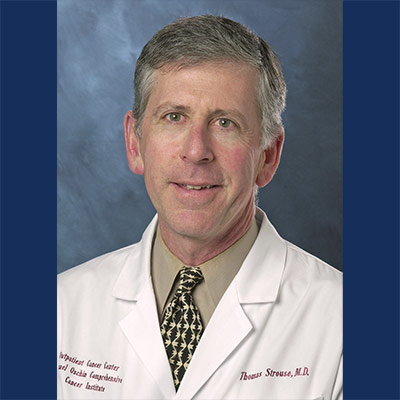
Dr. Tom Strouse is Professor of Clinical Psychiatry and the inaugural holder of the Maddie Katz Chair in Palliative Care Research and Education. He is also the Vice-Chair for Clinical Affairs in the David Geffen UCLA School of Medicine Department of Psychiatry. Dr. Strouse is the former Medical Director of Stewart and Lynda Resnick Neuropsychiatric Hospital at UCLA. He has been a faculty member at UCLA since he completed his residency training in 1991.
He has spent his career working with medically ill adults coping with psychiatric and physical aspects of catastrophic illness. Along with his current efforts to promote palliative care clinical research within the UCLA Health System, Dr. Strouse is a faculty member in the combined GLA/UCLA Palliative Medicine Fellowship, and is actively engaged with UCLA’s Operation Mend, a program for wounded US servicemen and women.
Dr. Strouse is a Fellow of the American Academy of Hospice and Palliative Medicine, a Fellow of the Academy of Consultation/Liaison Psychiatry, and an American Psychiatric Association Distinguished Fellow. He is board certified in general psychiatry, consultation/liaison psychiatry, and hospice/palliative medicine. From 2007-2018, Dr. Strouse served on American Board of Internal Medicine Test Committee responsible for writing the certifying exam for all North American physician candidates for the ABMS subspecialty of Hospice and Palliative Medicine. He chaired the exam committee from 2014-2018.
Dr. Strouse has published many peer reviewed papers and book chapters and sits on the editorial boards of a number of important journals. In 2017, he became an Associate Editor for the Journal of Palliative Medicine. He lectures throughout the country on topics related to pain, palliative care, psycho-oncology, and psychiatric aspects of medical illness. He was educated at Pomona College and the Case Western Reserve University School of Medicine.
